Rare Rides Icons: The Ford Festiva, a Subcompact and Worldwide Kia by Mazda (Part IV)

We reached a conclusion to the first Ford Festiva (or Kia Pride, Mazda 121, SAIPA, etc.) in our last installment, which saw the little hatchback finalize its Ford duties in 1993 and its Kia responsibilities in 2000. And while it continues life today as a Wallyscar in Tunisia, our coverage here moves on to Ford’s not-so-anticipated follow-up entry to Festiva, another Festiva! It’s an Aspire to you.
As we learned last time, the Festiva lived its Best Life with a Kia badge on the grille. Produced in South Korea (alongside North American Festivas) and sold in most markets, the Pride continued on through the Nineties as Ford worked up another subcompact hatchback. The new car would occupy the same dealer lots as the Pride in many places but would be sold in other places as a Ford.
Ford noticed the success Kia had with the Pride and enjoyed all the capacity provided by the South Korean manufacturer in which it owned a 17 percent stake. This time, when work started on a Festiva successor Ford didn’t invite Mazda to the meeting. Instead, the Blue Oval worked with Kia directly on a new car, as a joint project.
Ford wanted to save as much cash as possible, so it used the existing Festiva platform as a starting point. Affixed to the ’86 chassis was a more modern-looking body, which wore European-type influences instead of Eighties Japanese econobox cues. First to go was the flat front end with its squared-off bumper, rectangular lamps, and dated tape stripe appliques.
Festiva’s new front end was about as generic as it was before, really. Lamps were more rounded than before, which combined with large indicator lenses to form a loaf of bread shape. The sculpted hood lead to a rectangular grille that was much more modern looking than before, with Ford’s unadorned logo in the center. The bumper was offered in a couple of different styles by trim, and had either an open lower grille or was divided by vertical body-colored segments.
The A-pillar was more relaxed on the second-gen Festiva, which gave the whole hatchback a more aerodynamic shape. Down the side, a smooth fender picked up a firm character line that carried on through the doors and to the rear, as before. The secondary character line under the side windows of the Festiva was softened considerably for the second generation. Simple black dogleg door handles ported over directly to the new car.
Much like the front, the rear of the new Festiva was considerably more rounded, with sportier intentions and less focus on practicality. Gone were the hard edges of the roof and nearly square tailgate. In their place was a much faster C-pillar, and a tailgate with a sloped, larger rear window.
The tailgate was shaped around the new rear lamps, which were larger and more rounded than before. Rear lenses took a horizontal orientation over vertical, and wrapped softly around the rear fender. Below, the new Fiesta’s bumper stuck out further than before and no longer contained a small cut-out for the exhaust.
Unlike the prior Festiva which arrived as a lone three-door initially, Ford was keen to give buyers more choice from the get-go with its new model. The new Festiva debuted with three-, four-, and five-door styles, as hatch, sedan, and larger hatch respectively.
Inside, the Festiva attempted to look more modern on a tight budget. The Mazda gauges, steering wheel, and other components were replaced by parts from Kia. The same basic economy layout was maintained but was softened in keeping with Ford’s styling of the day. To save costs on door panels, models with power windows had their switches placed in the center of the dash above the HVAC. Vents were of course rounded, but in the exact same location as on the old Festiva. Taken as a whole, the new Festiva’s interior looked a lot like an additional layer of rounded plastic was placed directly over the old design.
Though it rode on the same platform, the new Festiva was larger than its predecessor in all dimensions. The wheelbase of the new car increased marginally for three-door examples, from 90.4 to 90.7 inches, and for the first time, the five-door and sedan versions used a longer wheelbase (93.9″).
Width increased notably on the new car, from 63.2 inches to 65.7″. Hatchback versions of the new Festiva lost a bit of height, 56.7 inches over the old car’s 57.5″ given their faster roof design. But the sedan was taller than before with its square roof, at 57.9 inches. As expected, a modernized and larger car weighed more: Festiva’s weight of 1,540 to 1,720 pounds ballooned to between 1,810 and 2,070 in the new car.
The new, larger Festiva upgraded its suspension to MacPherson struts at the front but maintained the same torsion beam rear suspension it had in 1986. To cope with the extra weight, the top engine on the old Festiva became the base engine on the new one. Available in all markets, the 1.3-liter Mazda B3 engine had eight valves, TBI, and made 63 horsepower and 74 torques.
Newly available was a larger 1.5-liter engine, the B5. The B5 had modern electronic fuel injection, 16 valves, and made 88 horsepower and 99 torques. Unfortunately, this more desirable engine was confined to the Asian and Australia/New Zealand markets. Transmissions were similarly segregated: Mazda’s old three-speed auto was the only automatic in North America, offered alongside a five-speed manual. Australian examples also suffered with the three-speed, but other markets had a four-speed automatic from Ford.
When it put the new Festiva on sale in 1994, the new hatchback maintained its identity in most markets. North America was an exception, where Ford wanted to distance itself from an unsuccessful product. The name switched to Aspire, and Ford was sure the new car would be a quick sell. Aspire was offered in three- and five-door variants; the sedan was off-limits.
For its debut year, the three-door hatchback was sold in two trims: Standard for $8,525 ($16,858 adj.), or sporty SE at $9,190 ($18,173 adj.). The five-door had only a standard trim and asked $9,150 ($18,094 adj.). The SE was visibly identified by the presence of a zesty rear spoiler, fog lamps at the front, some nice alloy wheels, a nicer interior, and blue backing for the gauges.
Elsewhere, Ford differentiated the Aspire via safety. It was the first subcompact offered with dual airbags as standard. ABS was an optional extra, too.
The Festiva remained unchanged for its first three years but received a visual refresh for model year 1997. The revisions were mostly limited to the front clip, where Festiva adopted a rounded front end that was more compliant with Ford’s Nineties corporate look. Rounded headlamps blended into clear indicator lenses to form a continuous oval. The oval theme was repeated on the grille, where the Blue Oval sat inside a body-colored oval, within the larger oval grille opening. That’s oval to the third power!
Underneath, the lower bumper valance was another oval, bisected with a thin egg-crate grille that sported two ovoid faux air inlets on either side. The bumper was finished with an amber reflector in front of the front wheel. The new Festiva’s front end was more sloped than the old car, and its hood was sculpted around the headlamps to give some visual interest. Festiva’s rear end received a more rounded bumper but was otherwise unchanged for the facelift.
In North America, the Aspire was not a successful car. The SE model was dropped after 1995, as the two base versions carried on for Aspire’s final years. Facelifted Aspires are rare, as Ford dropped the model from its North American lineup after 1997. Ford went without a subcompact in the market until 2011, with the introduction of the new Fiesta.
Kia put its version of the Festiva on sale in the South Korean market in 1994 and called it Avella. Kia was well-prepared, with the almost unhinged marketing above. South Korean customers could buy all three body styles of the Avella, and the Avella sedan in particular looked a lot like a later Chevy Metro sedan (remember those?) at the back. That body style was important to the South Korean market, as sedans of any size were seen as more desirable and upscale than hatchbacks.
Initial sales of the Avella were promising but dropped off quickly. It carried on in South Korea through 1999 and Kia’s export markets through 2000 and died the very same year as the much more popular Pride upon which it was based. Both the Pride and Avella were effectively replaced by the Rio, under Kia’s new management by Hyundai.
The Festiva was marketed once more as a Ford in the Japanese market, though this time its examples were all produced in South Korea. Festiva was once again unpopular there, and it was dropped in 1996, even prior to North America’s cancellation. Ford wasn’t ready to throw in the towel on the Festiva name in the Japanese market and had a new car ready immediately.
It was the first generation Mazda Demio (1996-2002). The cute, tall hatchback was closer to the idea of the original Festiva and was marketed as the Ford Festiva Mini Wagon. It sold through Ford’s Autorama dealership for Japanese customers who didn’t want their hatchback badged as a Mazda, for whatever reason.
The Demio lived on as a Festiva in Japan through the end of its first generation. Elsewhere it was sold as a new Mazda 121 and was generally popular. For Demio’s replacement in 2003, Mazda began to move away from such boxy styling and transitioned into a more expected tall hatchback shape.
With the new shape, it also wore a new model name in many markets: Mazda 2. You’d eventually know the 2 first as the Mazda2, then the Scion iA, then Yaris iA, then Yaris Sedan. Today, the Mazda2 just entered its most recent generation as a rebadge of the Toyota Yaris.
And so the tale of Festiva and Festiva (Aspire) comes to its conclusion. Ford’s primary takeaway might’ve been that no matter if designed by Mazda or Kia, a Ford-branded subcompact hatchback was a hard sell the Eighties or Nineties.
[Images: Ford, Kia, Mazda]

Interested in lots of cars and their various historical contexts. Started writing articles for TTAC in late 2016, when my first posts were QOTDs. From there I started a few new series like Rare Rides, Buy/Drive/Burn, Abandoned History, and most recently Rare Rides Icons. Operating from a home base in Cincinnati, Ohio, a relative auto journalist dead zone. Many of my articles are prompted by something I'll see on social media that sparks my interest and causes me to research. Finding articles and information from the early days of the internet and beyond that covers the little details lost to time: trim packages, color and wheel choices, interior fabrics. Beyond those, I'm fascinated by automotive industry experiments, both failures and successes. Lately I've taken an interest in AI, and generating "what if" type images for car models long dead. Reincarnating a modern Toyota Paseo, Lincoln Mark IX, or Isuzu Trooper through a text prompt is fun. Fun to post them on Twitter too, and watch people overreact. To that end, the social media I use most is Twitter, @CoreyLewis86. I also contribute pieces for Forbes Wheels and Forbes Home.
More by Corey Lewis
Latest Car Reviews
Read moreLatest Product Reviews
Read moreRecent Comments
- Corey Lewis It's not competitive against others in the class, as my review discussed. https://www.thetruthaboutcars.com/cars/chevrolet/rental-review-the-2023-chevrolet-malibu-last-domestic-midsize-standing-44502760
- Turbo Is Black Magic My wife had one of these back in 06, did a ton of work to it… supercharger, full exhaust, full suspension.. it was a blast to drive even though it was still hilariously slow. Great for drive in nights, open the hatch fold the seats flat and just relax.Also this thing is a great example of how far we have come in crash safety even since just 2005… go look at these old crash tests now and I cringe at what a modern electric tank would do to this thing.
- MaintenanceCosts Whenever the topic of the xB comes up…Me: "The style is fun. The combination of the box shape and the aggressive detailing is very JDM."Wife: "Those are ghetto."Me: "They're smaller than a Corolla outside and have the space of a RAV4 inside."Wife: "Those are ghetto."Me: "They're kind of fun to drive with a stick."Wife: "Those are ghetto."It's one of a few cars (including its fellow box, the Ford Flex) on which we will just never see eye to eye.
- Oberkanone The alternative is a more expensive SUV. Yes, it will be missed.
- Ajla I did like this one.





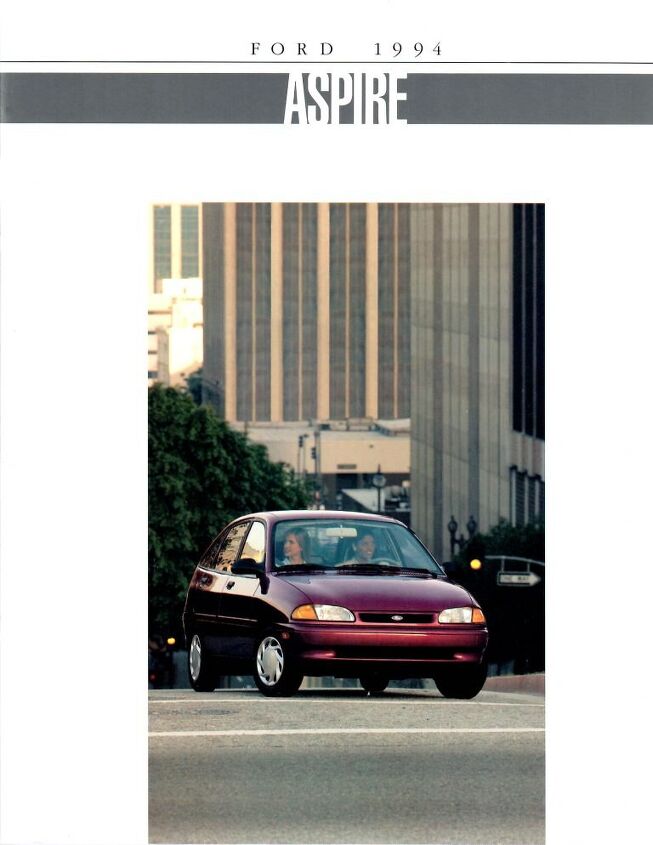


















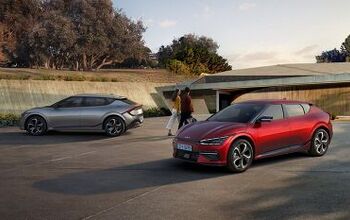



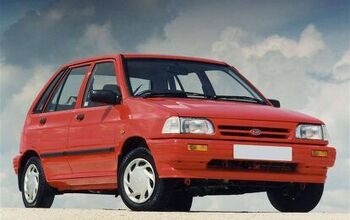



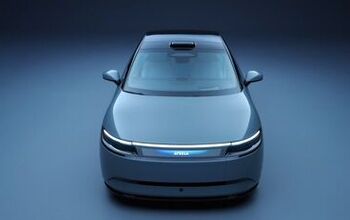

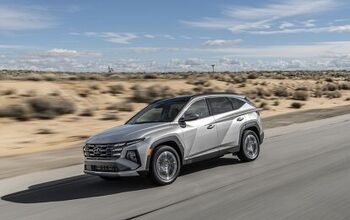


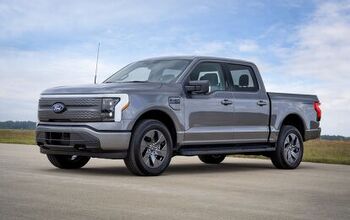




Comments
Join the conversation
I briefly dated an Australian fellow who was mad for Aspires; one of his better characteristics, if I’m honest.
The Kia Avellia (4door sedan) have the looks of a old Suzuki swift/metro? Really? Because Ford designed here in Dearborn Michigan, and you know how it MADE it! Because if you ever know or seen a GM Pontiac Grand AM that’s what it reminds you of in a small version or better yet its like this: Hey GM someone stole your dress and made it look better,Sorry that today’s cars aren’t selling because they’re too overly rounded and they don’t have the regular sedan shape like that car did, So when designers wake up and finally get the design right, then I’ll will buy.